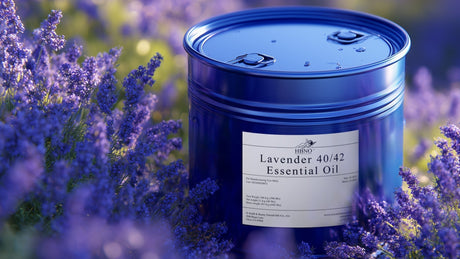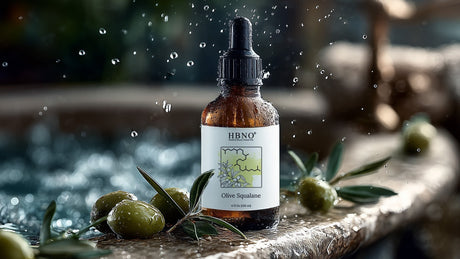Neem oil, extracted from the seeds of the neem tree (Azadirachta indica), has earned a reputation for its vast range of applications in both plant care and personal wellness. As a natural pesticide, it offers an eco-friendly alternative to synthetic chemicals, providing a solution for pest problems in the garden. Additionally, its impressive therapeutic properties make it a beneficial addition to your bath, nourishing the skin and promoting relaxation.
In this comprehensive guide, we'll explore the step-by-step process for mixing neem oil with water for both plant care and bath use. We'll also delve into the benefits of using "Neem Carrier Oil Virgin Organic" and "Organic Neem Carrier Oil," highlighting their importance in maximizing the effectiveness of neem oil applications.
Understanding Neem Oil and Its Varieties
Neem oil is a cold-pressed oil, rich in a variety of compounds like essential fatty acids, antioxidants, and plant sterols. Its benefits for both plants and people are vast, from being a natural insecticide to being a remedy for skin conditions. There are different types of neem oil available in the market, with the most common being Virgin Organic Neem Oil and Organic Neem Carrier Oil.
What is Neem Carrier Oil Virgin Organic?
Neem Carrier Oil Virgin Organic refers to the oil extracted from neem seeds using the cold-press method, without any refining or chemical processes. This form of neem oil retains all its natural beneficial properties and is free from pesticides or synthetic additives, ensuring its purity. The unrefined nature of virgin neem oil means it's loaded with nutrients, making it perfect for use in organic gardening and skincare.
Organic Neem Carrier Oil
Organic Neem Carrier Oil is similarly cold-pressed from neem seeds but is certified organic. It carries the same benefits as Virgin Organic Neem Oil, making it suitable for those looking for eco-friendly, sustainable options. This type of neem oil is especially valued in the wellness industry for its versatility, offering numerous applications in personal care formulations.
Both forms of neem oil are used extensively in DIY skincare recipes, homemade soaps, and organic pest control, providing a natural way to address various concerns.
Mixing Neem Oil for Plant Care
Neem oil is a powerful, non-toxic alternative to chemical pesticides. It acts as an effective insecticide and fungicide, capable of managing a variety of garden pests and fungal infections. Here, we'll explain how to prepare neem oil spray for your plants, ensuring that you get the best results while using this natural remedy.
Ingredients Needed for Neem Oil Spray
- Neem Carrier Oil Virgin Organic: This will be the main ingredient in your spray, providing the necessary benefits to your plants.
- Mild Liquid Soap or Emulsifier: Soap is used to help the neem oil mix thoroughly with water. Without an emulsifier, oil and water will separate.
- Water: Water acts as the solvent that dilutes the neem oil, making it safe for plant use. Use clean, warm water to help dissolve the neem oil better.
Step-by-Step Process
- Prepare Your Mixing Container: Start by getting a clean container to mix your neem oil and water. A large glass or plastic jar or bowl will do.
-
Mix the Ingredients:
- Add 1 tablespoon of Neem Carrier Oil Virgin Organic into the container.
- Add 1 teaspoon of mild liquid dish soap or any emulsifier like castile soap. This will help the oil dissolve properly in the water.
- Pour in 1 gallon (approximately 3.8 liters) of warm water into the container. Stir gently to mix the oil, soap, and water thoroughly.
- Transfer to a Spray Bottle: Once the mixture is well combined, pour it into a spray bottle or a garden sprayer. Be sure to shake the mixture thoroughly before each use, as oil and water naturally separate.
How to Apply Neem Oil Spray
- Target Affected Areas: Spray the neem oil mixture generously on the plant, ensuring that both the top and underside of the leaves are covered. Be sure to focus on areas where you've noticed pest activity, like aphids, spider mites, or whiteflies.
- Time of Day for Application: It's best to apply neem oil during the early morning or late afternoon. This prevents leaf burn, as neem oil can cause harm to plants when exposed to direct sunlight.
- Reapply as Needed: You should repeat this application every 7-14 days to keep pests at bay. In cases of severe infestation, you may apply the solution every 3-4 days until the problem is under control.
Benefits of Neem Oil for Plants
- Insecticide: Neem oil is an effective treatment for pests such as aphids, mealybugs, whiteflies, and scale insects.
- Fungicide: It helps in controlling fungal diseases like powdery mildew, rust, and black spot.
- Plant Health: Neem oil enhances overall plant health by acting as a growth stimulant, encouraging strong and healthy plants.
- Non-toxic: It's a safe alternative to harmful chemicals, making it ideal for organic gardening.

Mixing Neem Oil for Bath Use
Neem oil is known for its antiseptic, anti-inflammatory, and antibacterial properties. When added to a warm bath, it nourishes the skin, relieves irritation, and promotes relaxation. Here's how you can incorporate neem oil into your bath routine for a soothing experience.
Ingredients Needed for Neem Oil Bath
- Organic Neem Carrier Oil: This oil will infuse the bath water with its therapeutic properties, soothing dry skin and treating conditions like eczema and psoriasis.
- Epsom Salt (Optional): Epsom salts can further enhance the bath experience by relieving muscle tension and promoting relaxation.
- Essential Oils (Optional): For added fragrance and therapeutic benefits, you can include a few drops of your favorite essential oils such as lavender or chamomile.
Step-by-Step Process
-
Prepare the Ingredients:
- Measure 2 tablespoons of Organic Neem Carrier Oil.
- Add 1 cup of Epsom salts to the oil (optional).
- Add a few drops of essential oils, depending on your preference (optional).
-
Mix the Ingredients:
- In a small bowl, combine the neem oil and Epsom salts until evenly mixed.
- If using essential oils, add them to the mixture and stir well.
-
Add to Bathwater:
- Once the mixture is ready, add it to your warm bath water. Swirl the water to ensure the oils and salts are well distributed.
How to Enjoy the Bath
- Soak in the bath for at least 15-20 minutes, allowing your skin to absorb the beneficial properties of the neem oil.
- After soaking, rinse off with lukewarm water to remove any residual oil and enjoy the soothing effects on your skin.
Benefits of Neem Oil for the Skin
- Moisturizes Dry Skin: Neem oil is a natural emollient that helps to lock moisture into the skin, preventing dryness.
- Anti-inflammatory: The oil's anti-inflammatory properties can help reduce skin redness, swelling, and irritation.
- Acne Treatment: Neem oil's antibacterial properties make it a great option for treating acne and blemishes.
- Skin Healing: Neem oil is known to support skin regeneration, making it an effective treatment for scars and blemishes.
Precautions When Using Neem Oil
Though neem oil is natural and non-toxic, there are a few precautions you should take:
- Dilution: Always dilute neem oil before use, whether for plant care or skin applications, as undiluted oil can cause irritation.
- Patch Test: Before using neem oil on your skin, perform a patch test to ensure you don't have an allergic reaction.
- Avoid Overuse: Excessive use of neem oil on plants can lead to leaf burn, so be cautious with application frequency.
- Storage: Store neem oil in a cool, dark place to prevent oxidation and ensure it remains effective.
Conclusion
Neem oil, whether in its Virgin Organic or Organic Carrier Oil form, is a powerful, natural remedy that offers a multitude of uses. From protecting your plants against pests to enhancing your skincare routine, neem oil is a must-have in your eco-friendly and wellness toolkit. By learning how to properly mix neem oil with water for both plant care and bath use, you can maximize its benefits and incorporate it into your daily routine.
With its natural insecticidal properties, neem oil is an excellent solution for maintaining a healthy garden without relying on harmful chemicals. Similarly, its skin-healing benefits make it a valuable addition to your personal care regimen. Whether you're a gardener, skincare enthusiast, or both, neem oil provides a sustainable, effective solution to various needs.
By choosing Neem Carrier Oil Virgin Organic or Organic Neem Carrier Oil, you're ensuring that you're using the purest form of this beneficial oil, enhancing both your garden's vitality and your skin's health. Partner with a Private Label Extract Supplier offering pure, natural extracts in bulk quantities.



